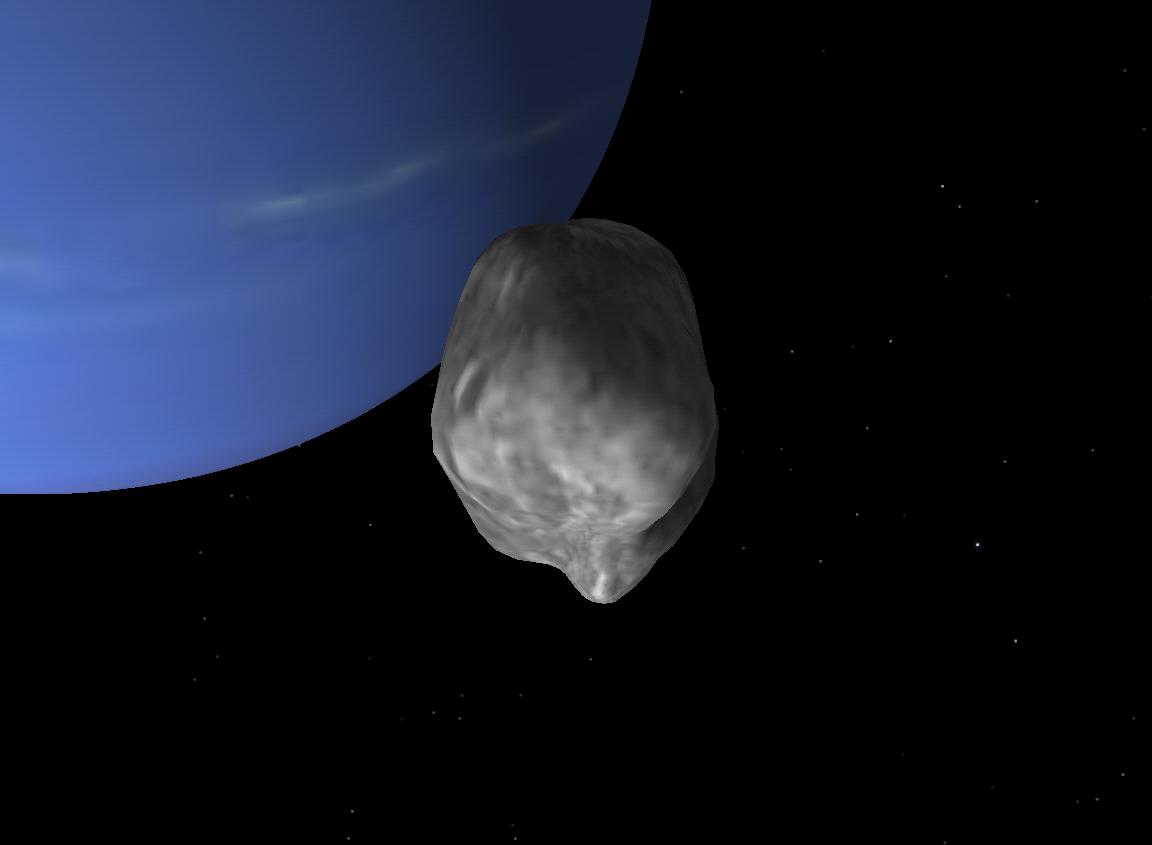Despina (moon) on:
[Wikipedia]
[Google]
[Amazon]
Despina , also known as Neptune V, is the third-closest inner moon of

Despina Profile
b
NASA's Solar System Exploration
(by Scott S. Sheppard) * {{DEFAULTSORT:Despina (Moon) Moons of Neptune Astronomical objects discovered in 1989 Moons with a prograde orbit
Neptune
Neptune is the eighth and farthest known planet from the Sun. It is the List of Solar System objects by size, fourth-largest planet in the Solar System by diameter, the third-most-massive planet, and the densest giant planet. It is 17 t ...
. It is named after Greek mythological character Despoina
Despoina or Despoena (; ) was the epithet of a goddess worshipped by the Eleusinian Mysteries in Ancient Greece as the daughter of Demeter and Poseidon and the sister of Arion. Surviving sources refer to her exclusively under the title ''Des ...
, a nymph
A nymph (; ; sometimes spelled nymphe) is a minor female nature deity in ancient Greek folklore. Distinct from other Greek goddesses, nymphs are generally regarded as personifications of nature; they are typically tied to a specific place, land ...
who was a daughter of Poseidon
Poseidon (; ) is one of the twelve Olympians in ancient Greek religion and mythology, presiding over the sea, storms, earthquakes and horses.Burkert 1985pp. 136–139 He was the protector of seafarers and the guardian of many Hellenic cit ...
and Demeter
In ancient Greek religion and Greek mythology, mythology, Demeter (; Attic Greek, Attic: ''Dēmḗtēr'' ; Doric Greek, Doric: ''Dāmā́tēr'') is the Twelve Olympians, Olympian goddess of the harvest and agriculture, presiding over cro ...
.
Discovery
Despina was discovered in late July 1989 from the images taken by the ''Voyager 2
''Voyager 2'' is a space probe launched by NASA on August 20, 1977, as a part of the Voyager program. It was launched on a trajectory towards the gas giants (Jupiter and Saturn) and enabled further encounters with the ice giants (Uranus and ...
'' probe. It was given the temporary designation S/1989 N 3. The discovery was announced (IAUC 4824) on 2 August 1989, and mentions "10 frames taken over 5 days", implying a discovery date of sometime before July 28. The name was given on 16 September 1991.
Physical characteristics
Despina's diameter is approximately . Despina is irregularly shaped and shows no sign of any geological modification. It is likely that it is a rubble pile re-accreted from fragments of Neptune's original satellites, which were disrupted by perturbations from Triton soon after that moon's capture into a very eccentric initial orbit. Compositionally, Despina appears to be similar to other small inner Neptunian satellites, with a deep 3.0 micron feature attributed to water ice or hydrated silicate minerals. It has a 0.09 albedo at 1.4 microns, 0.1 albedo at 2.0 microns, dropping to 0.03 at 3.0 microns, and increasing to 0.07 at 4.6 microns.Orbit
Despina's orbit lies close to but outside of the orbit ofThalassa
Thalassa (; ; Attic Greek: , ''thálatta'') was the general word for 'sea' and for its divine female personification in Greek mythology. The word may have been of Pre-Greek origin and connected to the name of the Mesopotamian primordial sea godde ...
and just inside the Le Verrier ring and acts as its shepherd moon. As it is also below Neptune's synchronous orbit
A synchronous orbit is an orbit in which an orbiting body (usually a satellite) has a period equal to the average rotational period of the body being orbited (usually a planet), and in the same direction of rotation as that body.
Simplified meani ...
radius, it is slowly spiralling inward due to tidal deceleration
Tidal acceleration is an effect of the tidal forces between an orbiting natural satellite (e.g. the Moon) and the primary planet that it orbits (e.g. Earth). The acceleration causes a gradual recession of a satellite in a prograde orbit (satel ...
and may eventually impact Neptune's atmosphere, or break up into a planetary ring upon passing its Roche limit
In celestial mechanics, the Roche limit, also called Roche radius, is the distance from a celestial body within which a second celestial body, held together only by its own force of gravity, will disintegrate because the first body's tidal force ...
due to tidal stretching.

Notes
References
External links
Despina Profile
b
NASA's Solar System Exploration
(by Scott S. Sheppard) * {{DEFAULTSORT:Despina (Moon) Moons of Neptune Astronomical objects discovered in 1989 Moons with a prograde orbit